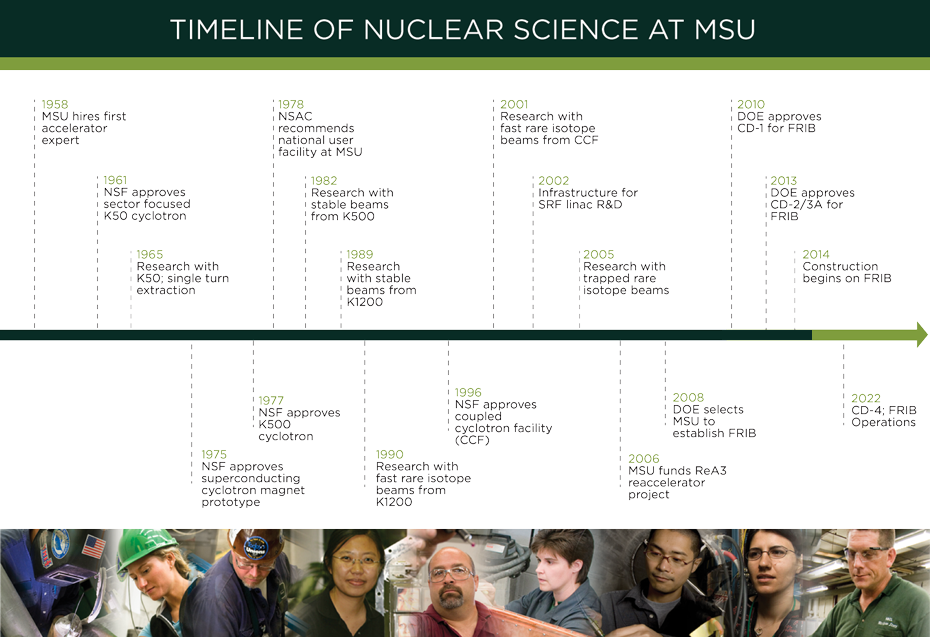History
Nuclear physics research began at Michigan State University (MSU) in 1958. In the decades that followed, MSU became known for its innovations in nuclear science and associated cross-disciplinary research, both in the United States and worldwide. A young Oak Ridge physicist named Henry Blosser was chosen as the lab’s first Director. MSU was able to land a National Science Foundation (NSF) grant to build its first 40 MeV cyclotron in 1961. Four years later, the first beam was accelerated. Because the device outperformed its design and provided beams of 50 MeV, it was called the K-50. Along with the new accelerator, a building was erected to house the laboratory and the people working on it. (continued below).

In 1973, the scientists had the the idea of using superconducting technology to create a more powerful yet smaller accelerator. After hammering out the details, a contract between MSU and the Department of Energy was signed early in 1980, work on a second superconducting cyclotron began and the National Superconducting Cyclotron Laboratory—formerly called the MSU/NSF Heavy Ion Laboratory—was born.
The K-500—the world’s first superconducting cyclotron—was launched at 3:00 p.m. on Saturday, November 21, 1981 and the first beam of particles was extracted in August of 1982, just five years after the team was given the go-ahead.
Two years later in 1984, the superconducting magnet for the second cyclotron was tested successfully. However, the original plan to couple the two cyclotrons together was revised so that the second cyclotron would operate independently, at least for the short term. The new plan was successful and the K-800 was online by early 1988 and, due to its excellent focusing power, renamed the K-1200 a year later.
The cyclotrons were shut down on July 2, 1999 so that work on the coupling system could begin. By October 1, 2000, the laboratory successfully produced its first beam of ions from the new facility. The power of the new facility allowed the lab to explore new isotopes, some of which can only be found in astronomical phenomena like supernova and neutron stars. Because of its newfound expertise in astrophysics, NSCL joined Notre Dame’s Nuclear Structure Laboratory and the University of Chicago to establish the Joint Institute for Nuclear Physics (JINA) in 2003.
In 2004, MSU embarked on an effort to host the new Facility for Rare Isotope Beams (FRIB). After a lot of hard work and dedication from the entire MSU community, on December 11, 2008 DOE announced that FRIB would be hosted by MSU. Actual construction began in March 2014 with a ground breaking, and technical construction began in October. Work continues today on the much anticipated FRIB project, which is scheduled to be operating in 2022.



